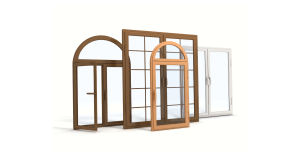If your windows start starting to show their age and you’re currently looking for ways on how to make them look better, considering glass window painting can go a long way in having your windows looking more aesthetically pleasing. Glass window painting is one of those things you can learn to do on your own, and if you’re an arts and crafts type of person, then that’s a bonus.
You might commonly see that glass window painting is also referred to as acrylic painting. This type of painting isn’t something that everyone can just pick up for the first time and be a pro at it. There are also a bunch of tools you’ll need when you’re considering paint for glass windows.
Paint for windows can come in a number of different types, and you’ll want to carefully select which one will work for you.
Painting In Windows
Some of the more popular options of paint that you can decide on are:
Transparent paints: Light will pass through transparent paints.
Acrylic paints: Acrylic paints are a little more on the opaque side and don’t allow for a low light transfer.
Resin-based paints: Resin-based paints come in a number of different colors and you can also decide on frosted or glossy textures.
It always helps to visit a showroom to see what the paints will look like in person. No one wants to jump the gun and paint their windows only to see that they didn’t turn out the way they anticipated.
What Tools Do You Need?
There is a wide range of tools you’ll need for painting your windows:
The frame of the window with the glass in it
- Paper
- Pencil
- Ammonia
- Vinegar
- Newspaper
- Bucket
- Liquid leading
- Sheets
- Scissors
- Rubbing alcohol
- Cloth
- Paintbrushes
- Paint that you’ve selected
Get A Stencil Ready
You’ll want to practice the type of design that you’ll be using on your windows before you go ahead and transfer that design right onto the window pane itself. It helps to get a large scrap piece of paper that’s around the same size as the window so that you get a better idea of how your design will appear in full scale. Some people also like to use the design as a stencil on the window. For those that are already expert painters, you don’t really have to bother with this step.
Clean The Area
Before you go to start any painting on the window, you’ll want to make sure that the entire pane is completely clean of any dust and debris. Get your bucket and add some water, vinegar, and ammonia to it. Get a brush and dunk it into the mixture and start brushing the window frame. You don’t want to apply too much pressure to the window. After the frame is completely cleaned up, you can proceed to clean the glass on the window. In order to do so, get a cloth and rubbing alcohol. Start rubbing away all of the dust and debris on the window. This step is important because dust and debris can affect how well the paint will stick to the pane of the window.
Background Color
After you’re all done cleaning the window frame and glass, you can now move onto the painting part, and this is the part that most people consider to be the most fun and rewarding. Get an old cloth and lay it down. The backside of your window should be facing you. To start the background of the window, use your largest brush first.
Ensure that you’re using a good amount of paint so that you get the most coverage possible without having to overlap paint that’s already wet. If you think you need to paint over areas a second time around, wait until the paint has dried up before going over it a second time.
After you’re done that, turn the windowpane on its over side to make sure that the wet paint doesn’t manage to touch anything in the area. Sometimes using a hairdryer can help speed up how fast the paint will dry.
Tracing
You’ll want to begin with the designs that are the farthest back so that you complement your background. Finishing with your foreground will be the last part you’ll be painting. If you’re using a stencil, get some liquid lead to trace your design so that it will be distinct and unique on the glass.
Before you take the stencil off, wait until the paint is completely dry. A natural bristle paintbrush can help your coverage to be a little smoother. Sometimes synthetic paint brushes require you to use a couple of more strokes in comparison to natural ones.
Finishing
If you’re looking for a glossy look or an opaque look, you’ll have to adjust how many coats of paint you’ll be using. After you’re finished painting, but the windowpane in an area where there isn’t much traffic. You don’t want dust and debris to get a chance at sticking to your wet paint.
Bonus Tips
Sticky stencils are recommended for your window painting designs. If you’re going to be painting your window in one color, you’ll want to use a sponge for that.
If your goal is for a stained glass design, you shouldn’t worry about using paintbrushes. Just get a paint tube that you can squeeze right onto the window and then get a toothpick to get rid of any paint bubbles that you might see.
Liquid-leading tubes will allow you to have a greater degree of control over the tube. After you’re finished with your painting, they can be situated in a place in your home where people can have a good look at your artwork. Some people also like to bring them to craft fairs or just give them to family members as a gift.

